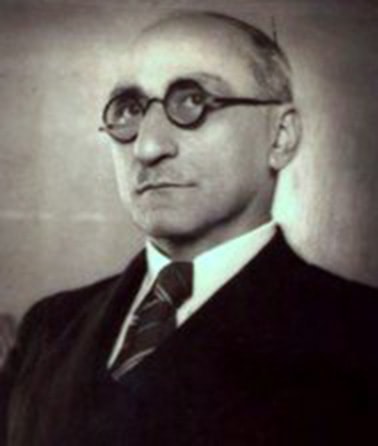Orientalist and historian Levon Melikset-Bek made an undeniable contribution to the study of Armenian-Georgian historical sources. He was the founder of the Department of Armenian Studies at Tbilisi State University, which is named after him.
Melikset-Bek was born in Tiflis (nowadays Tbilisi) on September 14, 1890. After two years of private larning, he went to the Royal School of Tiflis from 1899 to 1908. He graduated from the School of Law of the University of Odessa in 1913, where he also followed courses of History and Philology. He was interested in archaeology and traveled to various Armenian communities of Russia to that end. In 1914 he was elected corresponding member of the Society of History and Antiquities of Odessa.
After returning to Tiflis, he worked in several positions, such as member and secretary of the publishing committee of the Armenian Ethnographic Society, member and scientific secretary of the Caucasus section of the Archaeological Society of Moscow, and teacher of Georgian language and history at the third boys’ gymnasium of the city.
He taught Armenian language and history of Armenian literature at Tbilisi State University from 1918 until the end of his life. He also taught Armenian history at Baku University (1935), the Pedagogical Institute of Kutaisi (1935) and the Pedagogical Institute of Gori (1947). He also taught at Yerevan State University. He headed various archaeological campaigns in Armenia from 1923 to 1930. He earned the title of Emeritus Worker of Science of Georgia (1941) and was elected corresponding member of the Academy of Sciences of Armenia (1945). In 1956 he participated in the archaeological campaign in Mountainous Karabagh (Artsakh).
His doctoral thesis, defended in 1928, about medieval writers in northern Armenia, was published in Georgian in the same year. He also published a three-volume work, The Georgian Sources on Armenia and the Armenians (1934, 1936, 1955), The Armenian Writers and Georgia (1964), and many others works about Armenian-Georgian relations and Armenian medieval literature. He published various texts of Armenian and Georgian medieval literature and translated the Armenian poems of Sayat-Nova into Georgian, among other works. He published scores of articles in Armenian, Georgian, and Russian, which remain scattered in the press. He discovered the Armenian inscription of Sevan (874), where the name of Yerevan appeared for the first time in an epigraphic inscription.
He passed away on September 3, 1963, in Tbilisi.

